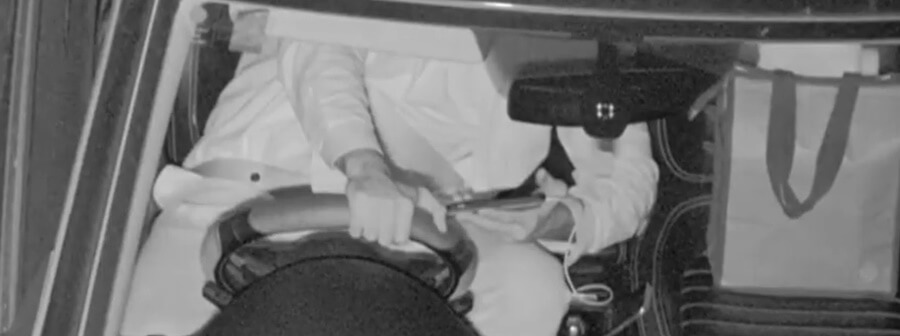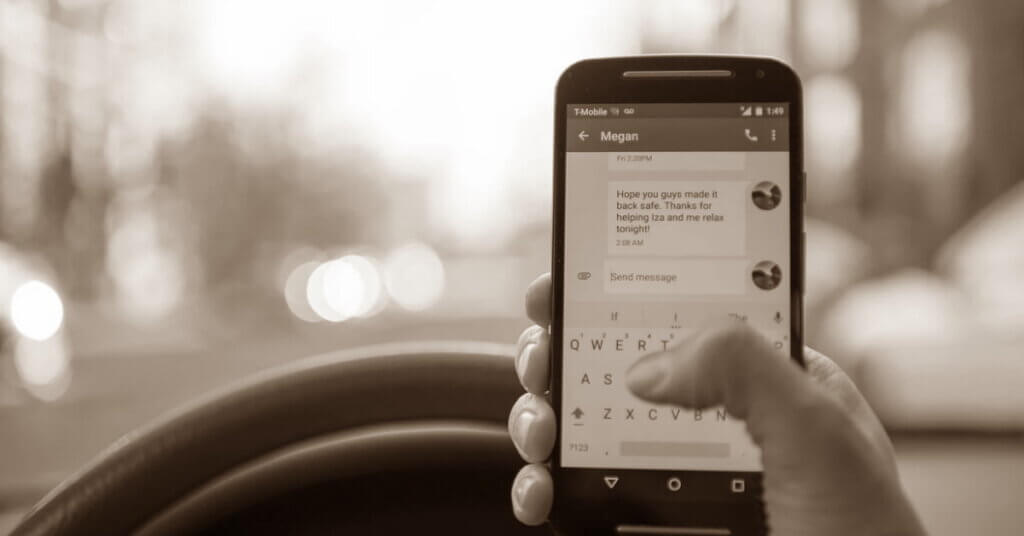AI cameras and image recognition is getting more spread around the world. Germany is following Australia and will be testing a new type of camera technology in a way to catch drivers in a way to help stop distracted driving by the use of smartphones. The cameras can see into the car and detect if the driver is holding a smartphone. Later the driver will be fined and get 1 demerit point on their license.
Holding a smartphone while driving is a visual distraction, one of the three types of distracted driving, and is a common problem all around the world. It’s not getting easier to avoid as smartphones become more connected with our vehicles, increasing the need to fiddle with them in the car.

In 2021 alone, there were 1,001 accidents caused by distraction, among other things due to cell phone use while driving… By using the new camera, we expect a further increase in road safety.
State Interior Minister Roger Lewentz (SPD).
The picture reconnection is using software that works by taking a picture through the windshield of the car. The AI software scans the hand position of the driver, to determine if the driver is holding a device. To further train the AI network any suspicious hand positions will be photographed, and the photo will be evaluated by humans.
Every day, more than 10 people are killed and 1,000 people are injured in accidents involving distracted drivers.
The non-profit End Distracted Driving (End DD)
In New South Wales, Australia, phone detection cameras have been in operation since March 2020 after the state awarded ta contract to Acusensus which developed the technology. Germany will be the first European county to use the same technology. The first test unit was set up in the state of Rhineland-Palatinate with great success. After only one hour of operation, the camera had already caught 10 offenders. The system in place consisted of a single camera unit that was set up above a road.

The system will on June 1, 2022 start a three-month pilot project in Trier. After another trial period in Mainz, the data will be analyzed and officials will decide whether or not to expand the system.
Fines will only be €100 ($105 USD) and 1 demerit point on the offender’s license. German authorities state that the camera does not recognize faces and emphasize that data protection and information security were found to be harmless by the state commissioner.
Three Types of Distracted Driving
Using a cellphone is dangerous when driving because it can take your eyes, hands, and mind off of driving. Although the term “distracted driving” is often used in conjunction with using your smartphone and “texting and driving,” not all distracted driving accidents involve using cell phones. According to the NHTSA, 3,142 people were killed in distracted driving accidents in 2019. Understanding the three types of distractions is important in preventing them.
There are three types of distractions that can occur behind the wheel:
Visual Distractions
Visual distractions include all activities that take the driver’s eyes off the road ahead of them.
- Smartphones, (i.e. texting, phone calls, social media, etc.)
- Looking at GPS directions on a screen
- Staring at something outside the vehicle (i.e. most common car accidents, fires, etc.)
Manual Distractions
Manual distractions include all activities that cause the driver to take their hands off the wheel to accomplish a task.
- Eating or drinking.
- Attending something in the care (i.e. a baby or pet).
- Taking off a jacket or putting on makeup
- Changing the music/radio station.
Cognitive Distractions
Cognitive distractions involve anything that can cloud the driver’s mind.
- Conversations or arguments with passengers.
- Emotional or intense phone calls.
- Stressful days at work or school.
- Feeling nervous about activities or tasks en route to your destination.
- Feeling tired or depressed.
- Grief from a sudden loss (death of a loved one, loss of a job, breakup, etc.)
Phone usage while driving increased by about 38% at the onset of the COVID-19 pandemic.
According to the California Office of Traffic Safety


